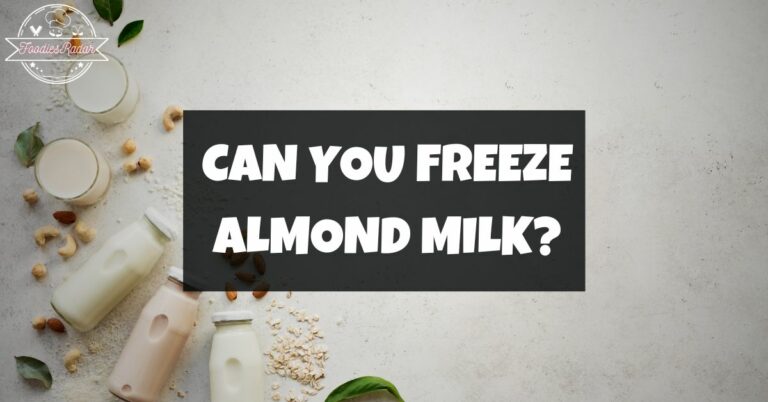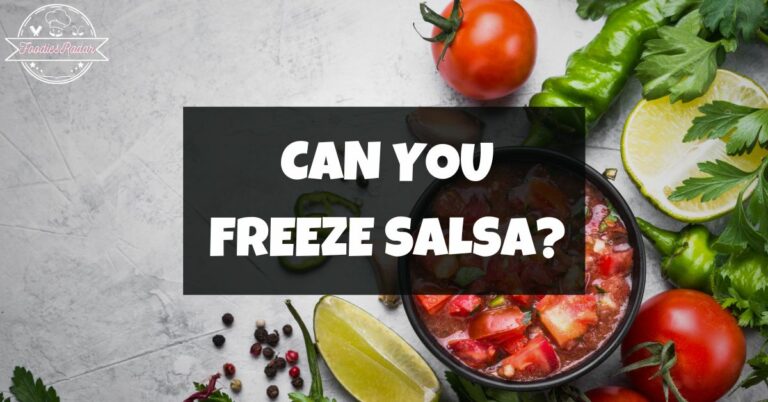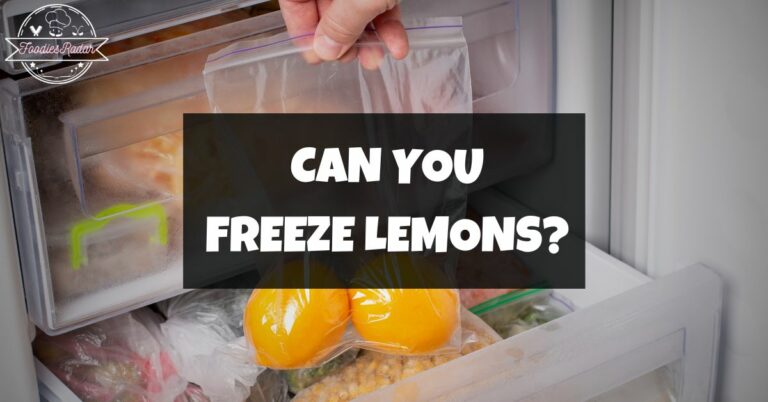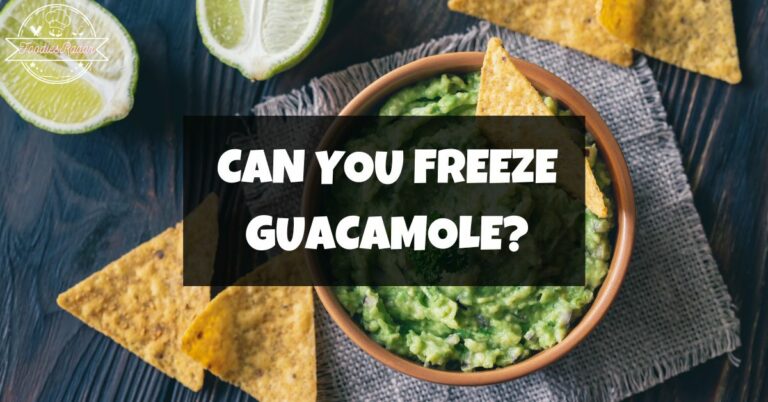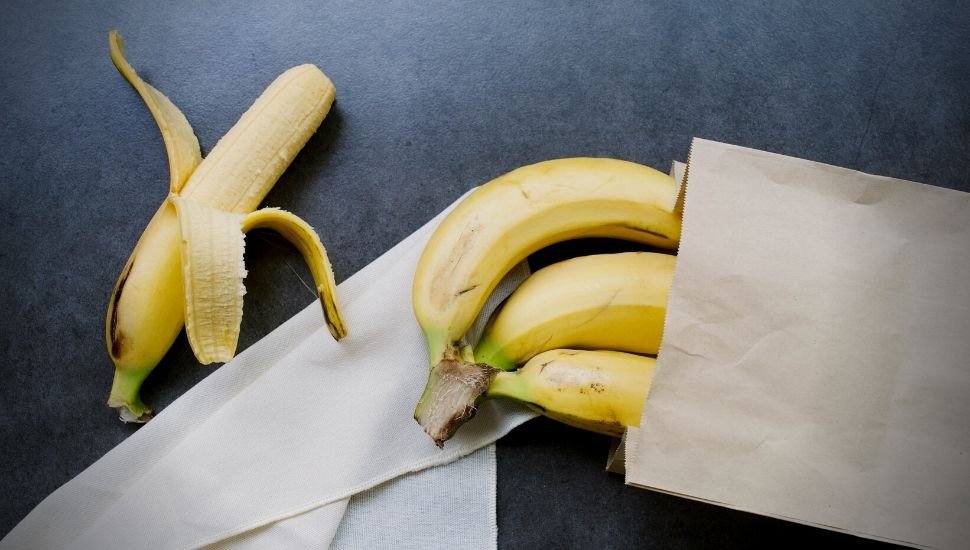
We’ve all been there, I’m sure of it. You buy a lot of bananas to increase your fruit consumption. Still, a few days later, you find yourself with overripe, spotted bananas you don’t know what to do with.
If you feel pressured to come up with a recipe quickly, I have a new suggestion: freeze your bananas.
Your ripe bananas can be frozen later rather than composted or thrown away. Bananas may be used in so many ways that if you want to prepare ahead, you may decide to freeze a few as soon as you return home from the grocery store.
Continue reading to answer all your queries related to freezing bananas.
Can You Freeze Bananas?
Bananas are freezer-safe. It’s effortless to do, and you can use them to construct various things. Make smoothies, non-dairy banana ice cream, cakes, muffins, or banana bread with them. There are numerous banana recipes here.

Banana freezing is quite simple. Some people prefer to freeze them whole and with the peels still on. Because it’s simpler to utilize bananas that way.
I like to freeze them sliced, no need to defrost or smash them before adding them to blender containers for smoothies. Slices defrost more quickly than entire bananas if I use them in baking.
Can You Freeze Unpeeled Bananas?
It’s easy. Place them intact in the freezer. However, they will stick to items if you simply dump twenty unpeeled bananas into a small freezer and hope for the best.
They will stick to one another even if you freeze them in a plastic bag. So let’s introduce the idea of “flash freezing” rather than bagging each banana manually.
It essentially means you freeze each item independently before combining them to save space (after they have already been frozen).
So, separate the bananas that you freeze. Once frozen, combine them in a freezer bag so they won’t stick. Flash freezing is practical for bananas that haven’t been peeled.
Is It Safe To Freeze Bananas?
Bananas’ only limited shelf life is a drawback. But flash freezing has been shown to preserve all nutrients while keeping the fruit fresh.
Bananas include essential vitamins and minerals such as potassium, vitamin B6, vitamin C, magnesium, copper, and manganese.
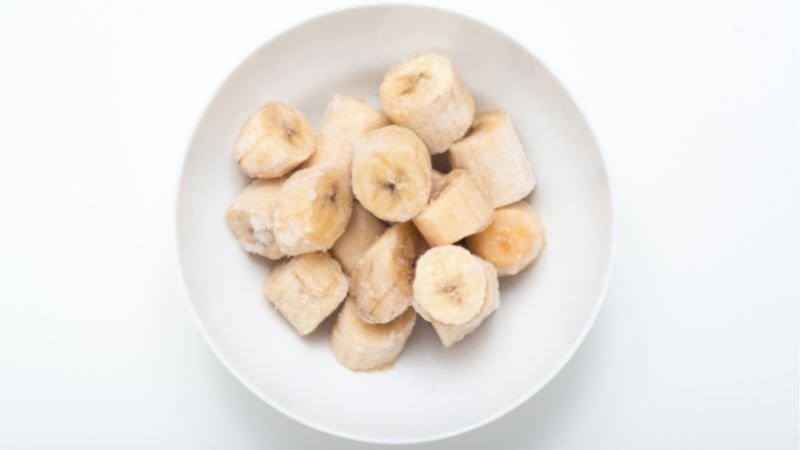
More extended storage periods do have an impact on the quality of frozen foods. However, bananas that have been frozen will continue to be suitable for two to three months.
Bananas will only generally make you queasy if you freeze them. Make sure to label frozen bananas with the dates to ensure you won’t eat too old bananas.
How To Freeze Bananas?
Freezing them is the best method depending on how you intend to use the bananas later. Give these freezing suggestions a try based on what works best for your needs and favorite recipes.
How to Freeze Large Banana Pieces
Peeling the bananas first will make defrosting them much more manageable. Put the bananas in a sealable plastic bag after cutting them in half or significant bits. Date and seal the bag.
How to Freeze Sliced Bananas
Bananas should first be peeled and sliced into the proper size. Slices should be frozen for about two hours in only a layer on a baking sheet fitted with parchment or a plate.
Put the frozen slices in a resealable plastic bag, and give it a date and a label. Now you can take however many frozen banana slices you like.
How to Freeze Whole Bananas
Do you feel less ambitious? Put the whole, unpeeled banana in the freezer right away. Freezing whole bananas is the easiest way to freeze bananas because it comes in their natural container. Simply defrost for an hour on the counter before beginning to bake.
Beyond the time savings, what’s the bonus? The bananas are naturally mashed when removed from the peel for your next baking project.
What Is The Best Way To Freeze Bananas?
Although I have tried freezing unpeeled bananas, I am not a fan. I know that some people prefer it.
Banana peels will soften and turn dark when frozen. The bananas can still be eaten safely, but removing the peel is difficult. They won’t be as “fresh” as if you freeze them without the peel.
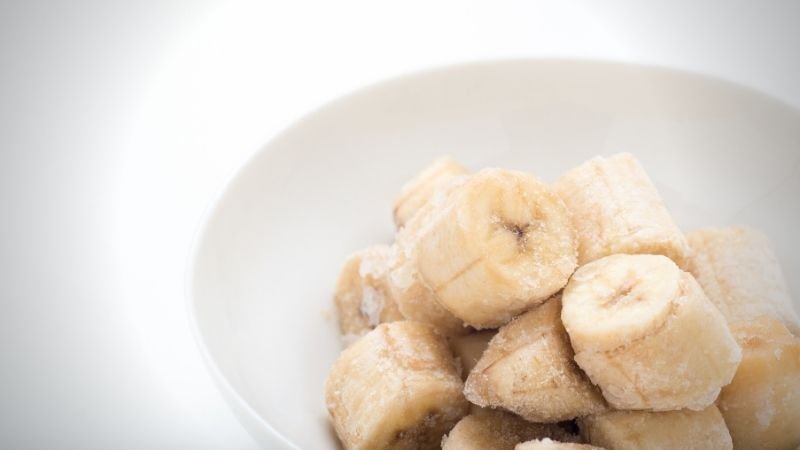
When I use frozen bananas in a recipe, I typically freeze them in half because it is simpler for me to measure them.
Additionally, many smoothie recipes call for half a banana, making it simple. The method that works best depends on the recipe you use!
How To Thaw Frozen Bananas?
Depending on the amount of time you have and what you plan to do with the frozen bananas, there are various methods to thaw them out:
- Natural: take no action. Just wait until a toothpick can be inserted through them quickly. Simple, no?
- Microwave: Use the microwave’s low power setting or “defrost” option for 3–4 minutes.
- Bowl of hot water: Put them in a plastic bag and place them in a bowl of hot water, but not scorching, to speed up the process.
Depending on how you use them, you may need to defrost them slightly.
- Baking: They should be thoroughly thawed before baking. The banana shouldn’t have any frozen parts remaining (the microwave can be helpful here).
- In a smoothie: A little bit of frozen fruit in a smoothie is okay, if not preferred.
- In oatmeal: You want them to be partially thawed, but you also want them to be fresh to add to your oatmeal. The oats will help them defrost.
To make chocolate banana bites, thoroughly freeze the banana slices, then dip them in the chocolate before letting them defrost naturally.
How Long Do Frozen Bananas Last?
Bananas can stay fresh in the freezer for up to two years if properly stored.
Keep them in their original packaging until you use them; once they start to go bad, they quickly become inedible.
Bananas should stay fresh in the refrigerator for around three weeks. However, this can vary depending on the variety you select.
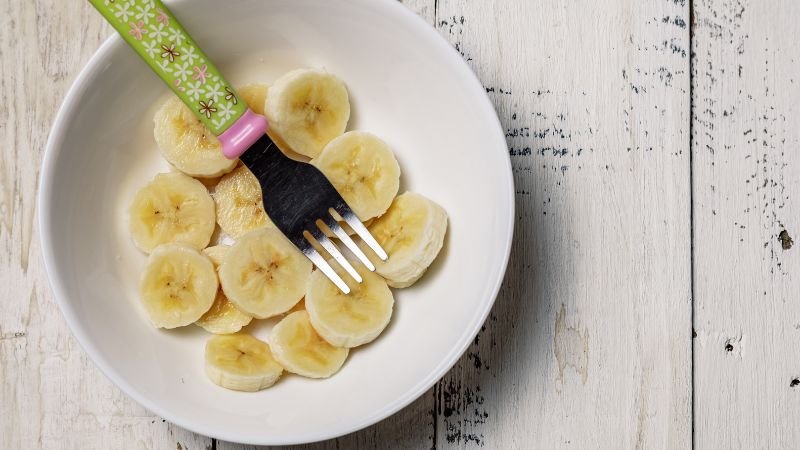
A banana’s smell is the best indicator of whether it has gone bad. It’s time to replace them with new ones if they smell rotten or moldy.
There is no established guideline for how long they will keep in the freezer. Banana varieties will last for varying lengths of time.
For instance, one study discovered that South American bananas remained edible after seven months, while frozen bananas from Costa Rica lasted slightly under six months.
Bananas are very perishable, so keep that in mind. They may be kept on shelves longer than expected because they don’t spoil as rapidly as other fruits like apples or pears.
Do Bananas Freeze Well?
Bananas do indeed freeze well. Although it is possible to freeze bananas in their peels, it will be quicker and less frustrating if you take the peels off first.
Freezing your bananas intact is a fantastic idea if you intend to use them in bread or smoothies. It is best frozen when a banana is ripe, and the peel is just starting to develop brown patches. Bananas are the sweetest at that time.
Bananas can be frozen whole, chopped, or mashed. Bananas should only be eaten when fully ripe and always be peeled first. You may use frozen bananas right out of the freezer for dishes like smoothies or ice cream.
The majority of baked dishes require the bananas to be thawed beforehand. Bananas that have been frozen should generally be used within six months.
Related content:
What Can I Use Frozen Bananas For?
You can use bananas frozen in different kinds for various recipes:
Frozen whole or half bananas: These work well in smoothie bowls, excellent creams, and smoothies! Frozen bananas enhance such dishes’ thickness, creaminess, and coldness.
If you want a chocolate-covered banana fix, freeze each banana with a popsicle stick inside. The base will then be prepared for dipping!
Frozen sliced bananas: Frozen slices work nicely for smoothies and smoothie bowls. However, they also make a fantastic shortcut for “chocolate almond butter banana nibbles”!
Simply sandwich two pieces with almond butter and place them back in the freezer.
Frozen mashed bananas: Banana bread energy balls, banana nut muffins, banana oatmeal cookies, and paleo banana bread are just a few baked products and snacks made using mashed bananas!
Final Verdict:
The fruit grown the most globally, by weight, is bananas. They can be harvested in Africa when still green, brought to Iceland and will ripen naturally. They transport incredibly well. Therefore there’s a good explanation for this.
However, sometimes they ripen too quickly. Every day eating bananas for breakfast, lunch, and dinner is only for some.
You should then freeze them. But first, peel them. To save space, freeze each one separately (“flash freezing”) before combining them into one bag.
You could also slice them. Or smash them. It would be ideal if you took action.


